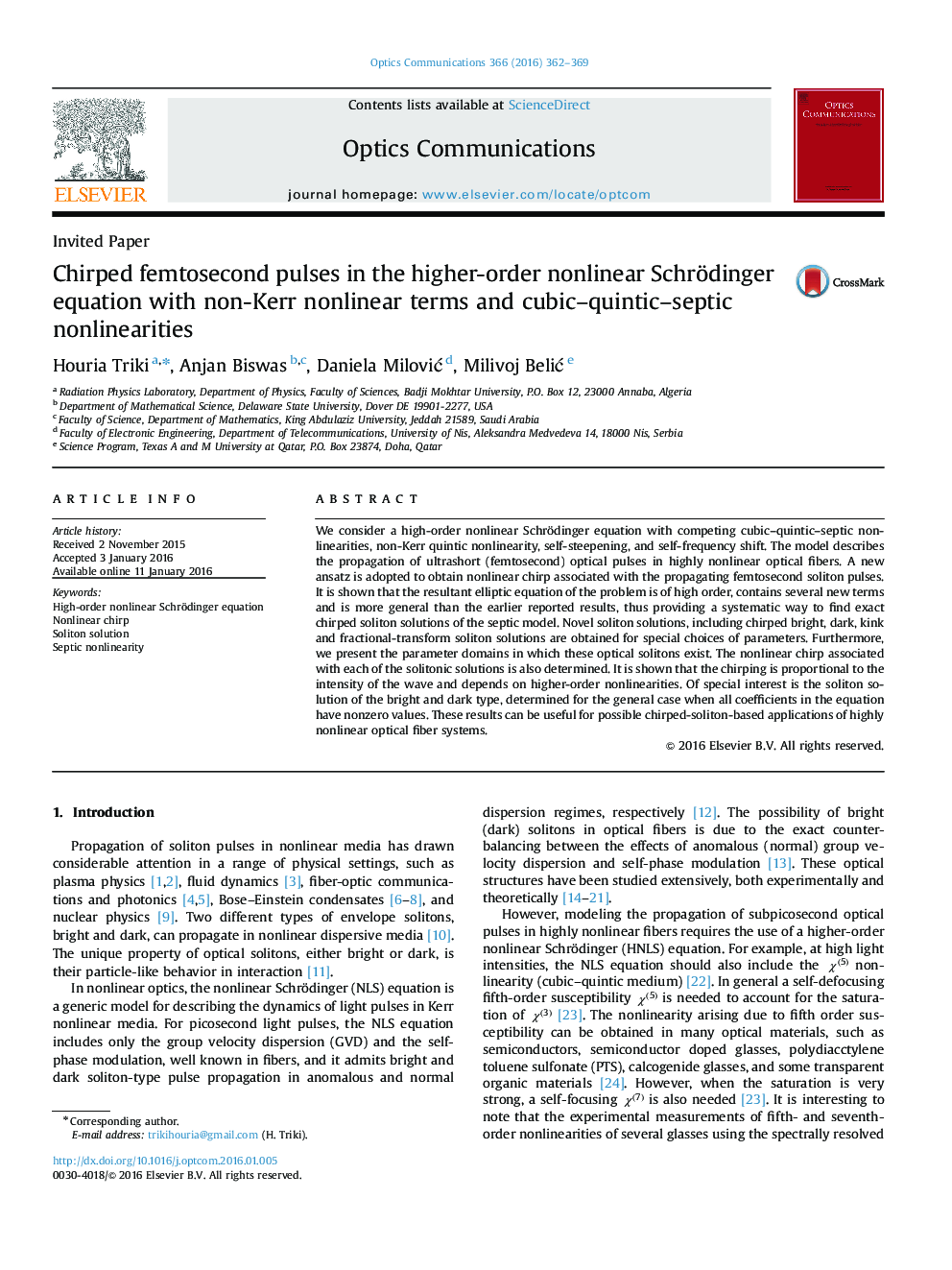| Article ID | Journal | Published Year | Pages | File Type |
|---|---|---|---|---|
| 1533433 | Optics Communications | 2016 | 8 Pages |
•The nonlinear Schrödinger equation with competing cubic–quintic–septic nonlinearities is investigated.•We introduce a new ansatz to obtain the nonlinear chirp associated with the propagating soliton pulses.•Chirped bright, dark, kink and fractional-transform soliton solutions are derived.•The parameter domains in which these optical solitons exist are reported.•The nonlinear chirp associated with each of the solitonic solutions is determined.
We consider a high-order nonlinear Schrödinger equation with competing cubic–quintic–septic nonlinearities, non-Kerr quintic nonlinearity, self-steepening, and self-frequency shift. The model describes the propagation of ultrashort (femtosecond) optical pulses in highly nonlinear optical fibers. A new ansatz is adopted to obtain nonlinear chirp associated with the propagating femtosecond soliton pulses. It is shown that the resultant elliptic equation of the problem is of high order, contains several new terms and is more general than the earlier reported results, thus providing a systematic way to find exact chirped soliton solutions of the septic model. Novel soliton solutions, including chirped bright, dark, kink and fractional-transform soliton solutions are obtained for special choices of parameters. Furthermore, we present the parameter domains in which these optical solitons exist. The nonlinear chirp associated with each of the solitonic solutions is also determined. It is shown that the chirping is proportional to the intensity of the wave and depends on higher-order nonlinearities. Of special interest is the soliton solution of the bright and dark type, determined for the general case when all coefficients in the equation have nonzero values. These results can be useful for possible chirped-soliton-based applications of highly nonlinear optical fiber systems.
